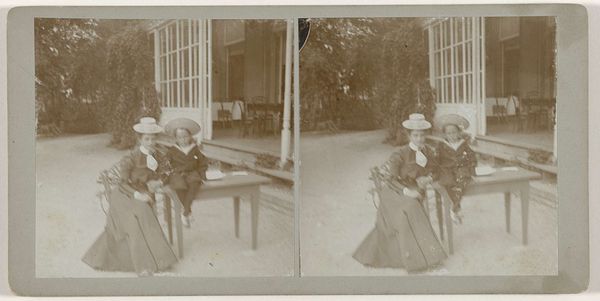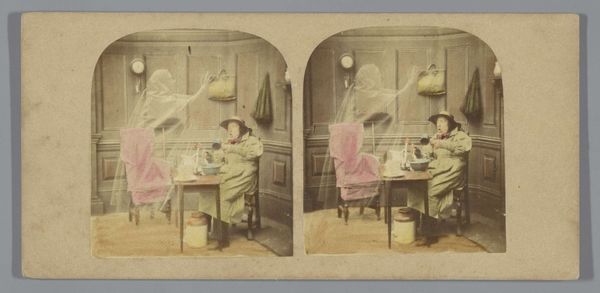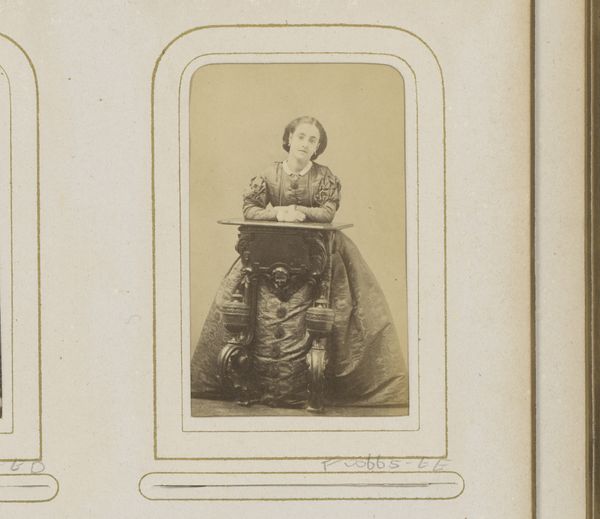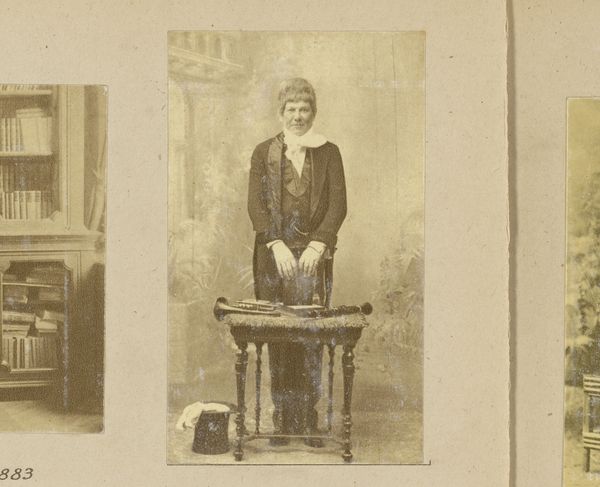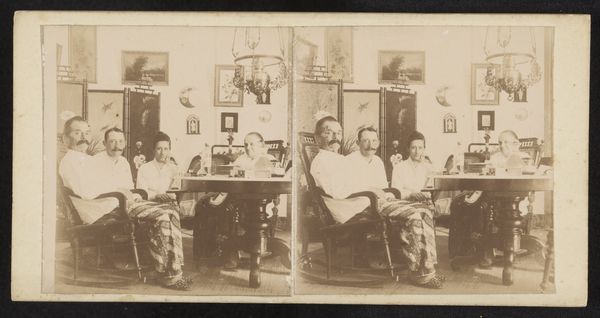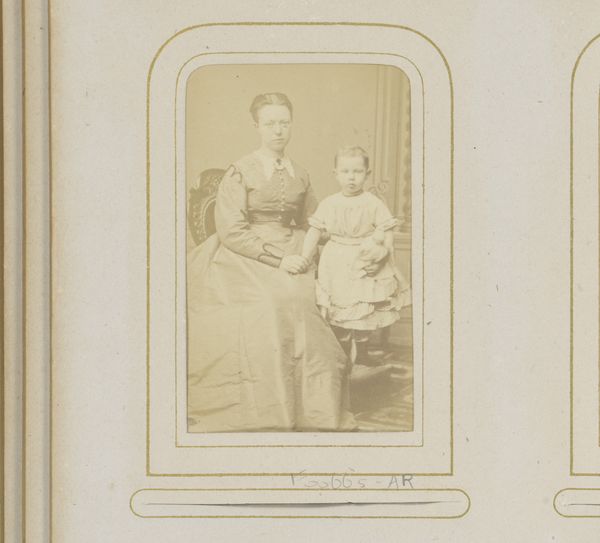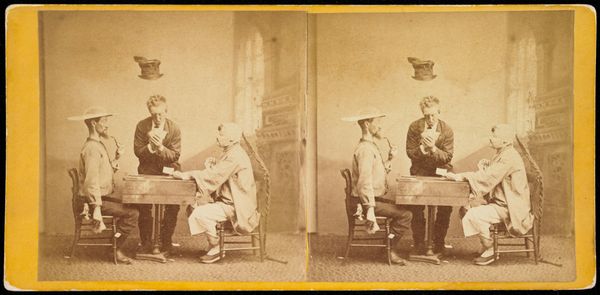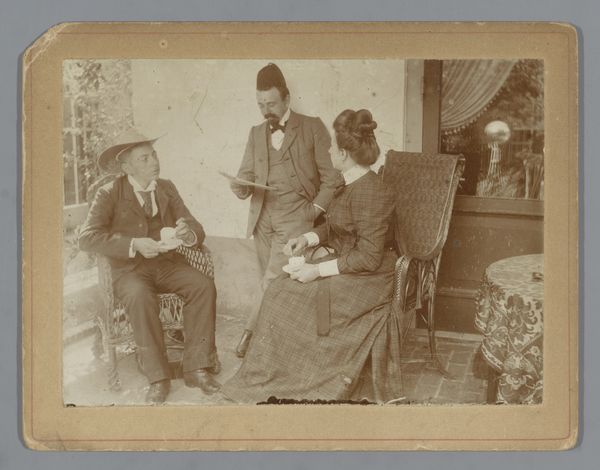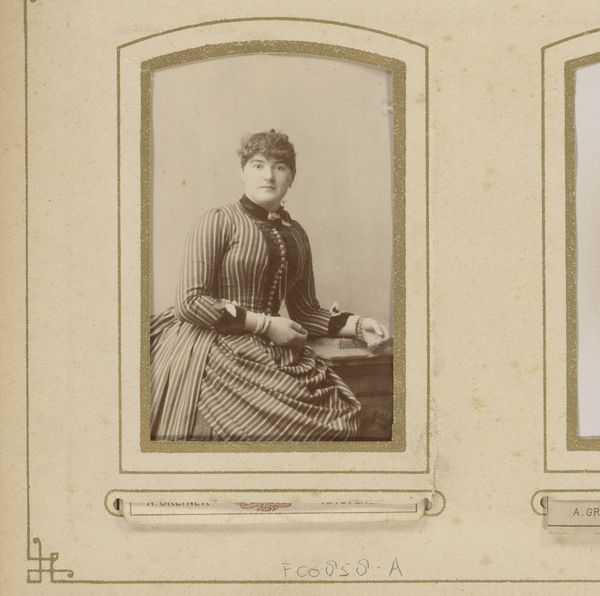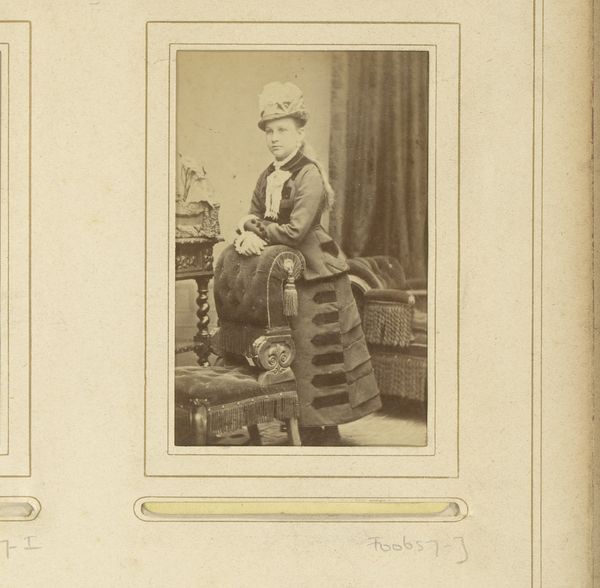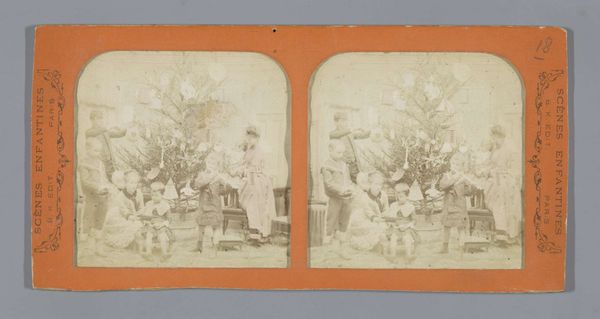
Portret van Maarten Iman Pauw van Wieldrecht (links), Agnes Henriëtte Pauw van Wieldrecht (rechts) en juffrouw Badollet c. 1869 - 1873
0:00
0:00
photography, gelatin-silver-print
#
portrait
#
photography
#
group-portraits
#
gelatin-silver-print
#
genre-painting
#
realism
Dimensions: height 72 mm, width 159 mm, height 85 mm, width 169 mm
Copyright: Rijks Museum: Open Domain
Editor: Here we have a photographic image titled 'Portret van Maarten Iman Pauw van Wieldrecht, Agnes Henriëtte Pauw van Wieldrecht en juffrouw Badollet,' created sometime between 1869 and 1873. It seems to be a gelatin silver print depicting two women and a young boy seated around a table. The muted tones create quite a reserved, almost melancholy mood, what stands out to you? Curator: That mood you're sensing is tied to the cultural memory embedded within images of this era. Note the deliberate posing. The sitters are arranged with specific objects around them – objects that act as silent narrators of their status and affiliations. Consider how the table itself becomes a stage. What symbols can you interpret from the backdrop? Editor: Well, I see the potted plants behind them, almost like a wall of greenery, maybe signifying prosperity and domesticity? And their clothing, particularly the women's dresses, seem quite detailed and suggest a certain social class. Curator: Precisely! The plants, recurring symbols of cultivation and domestic order, and the elaborate dresses speak volumes. But look closer. Consider the relationship between the figures. There's a hierarchy suggested not only by placement but by gesture. What stories might these visual cues be telling us about family dynamics and social roles in that era? Does anything else draw your eye? Editor: Now that you mention it, there’s also something slightly unsettling about the repetition in this stereo image format... Almost like looking at a memory twice over, or seeing them slightly out of sync. Curator: The doubling amplifies that sense of staged reality, a curated glimpse into their world intended to project a particular image to the external viewer and themselves. That carefully crafted projection also carries an element of the uncanny because the people cannot really control what someone thinks when the picture gets looked at and that also carries an emotional weight that continues through cultural memory. Editor: That's fascinating! I'd never considered how much information and psychology could be packed into such a seemingly simple portrait. Thank you for opening my eyes to the symbolic depths of this work. Curator: The image reflects not only how these individuals wanted to be seen but also reveals cultural assumptions of that time, things that carry resonance still. Now, how would your perception be different if this photograph had been lost to time?
Comments
No comments
Be the first to comment and join the conversation on the ultimate creative platform.
